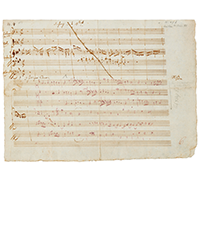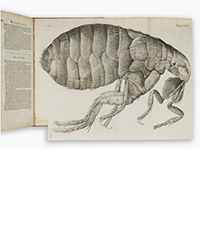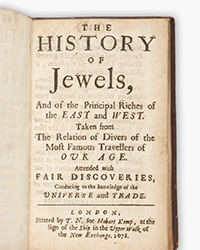A few months ago, a team from the University of Lyon-2, France, made an audio reconstruction of Paris in the 18th century. Though captivating, the video (news.cnrs.fr/articles/sound-18th-century-paris) lacks an essential part: people. Fortunately, a famous book renders the customs and lifestyle of the Parisians of the time. Let's take a walk in the dirty, insane and yet fascinating streets of the French capital on the edge of the Revolution. Your guide? The second edition of Mercier's Tableau de Paris (Amsterdam, 1782).
Louis-Sébastien Mercier (1740-1814) was a prolific writer and philosopher, who signed dozens of plays as well as hundreds of articles about Paris that were published in various "gazettes" (or newspapers). In 1780, eleven years after his famous L'An 2440, he compiled dozens of them in what was to become his most famous work, Tableau de Paris. The first edition (Neuchâtel, 1780) came out as a 2-volume set and though Mercier refused to give into satire, several of his criticisms displeased the government, forcing him to settle in Switzerland for a while. There, he augmented and corrected his work and published a second edition in 1782. “I've written no catalog or inventory,” he underlines. “I only mean to paint, not to judge.” His work, a playful reading, gives an invaluable description of a city that Voltaire—whom Mercier despised—once described as a "chaos of wonders"; and indeed, Paris appears in Mercier's writing like a maze of horrors, beauties and bizarreries. "Just like in a painting of Rembrandt, darkness prevails in my painting," he says. "It is not my fault, but the subject's." In the following "visit", facts are all taken from Mercier's book. Take it as a written reconstruction.
Watch out! Hell on wheels.
Unlike in London, there are no sidewalks in Paris, and pedestrians are all the potential victims of mad vehicles driven at full speed by young Phaetons. Coming out of your house, you can see a doctor passing in a coach, a dancing master in a cabriolet, a master of arms in a trolley, and a prince driven by six horses, all galloping as if in the middle of a desert field. Thus, the threatening wheels that proudly carry the rich are stained with the blood of all the innocents whom they ran over. These accidents have become so common that there are fixed prices for a broken arm or leg. Watch out! Watch out! cry the drivers from afar, sometimes sending some mad dogs running in front of their equipage. The philosopher Jean-Jacques Rousseau was badly hurt by a Danish dog in 1776, and the owner of the vehicle hardly stopped while the philosopher was lying on the ground.
When a coach arrives, you have to step aside, holding your breath; and be extra-careful when you come across a layer of manure on the pavement—the first paved streets appeared in Paris in 1184. It was spread by some rich and sick man, who wants to damp the noise of the coaches that pass under his windows. And a silent coach is more dangerous than a noisy one! Furthermore, the manure soon turns into a black and stinking mud where you drop through up to your knees. Welcome to Paris!
Mud Cleaners
The streets of Paris are dirty, and a muddy gutter runs in the middle of many of them, carrying wasted water—and sometimes worse. When it rains, it overflows and the "mud cleaners" offer you to use a wooden plank for a small amount of money. Watch out! Or you will lose your balance and end up in the middle of filth. You may wonder how a Parisian, jumping over a muddy stream while wearing a "trois-marteaux" whig, some white stockings and a striped coat, eventually gets from faubourg S. Jacques to faubourg St. Honoré with only a few stains on his stockings. Only a Parisian can work such miracles!
Paris is a dirty city. When the smell of excrement gets to your nose, you know that some cesspit has been emptied in the street the previous night. Most of the time, the emptiers do not bother taking the fecal material out of town and pour the contents of the pits directly into the gutter; this terrible poison slowly drifts into the streets until it reaches the Seine river, where the water carriers fill up their buckets every morning before bringing them back to their customers.
Slaughterhouses
Are you suddenly trying not to step into a thick layer of blood curdling? Then you must be close to the butchers' shops. They are located in the heart of the city and the blood of the slaughtered animals runs on the pavement. The din of the dying animals is terrible. An ox is tied on the ground, a heavy sledgehammer breaks its head, a long knife cuts its throat open, its steaming and boiling blood flows like a river from its deadly wound; yet it is still fighting and groaning. The ordeal of these sacrificed creatures is almost unbearable. Sometimes, a beef breaks through and runs away in the streets, spreading terror among children and women; and those who run after it are even more dangerous! With their swollen necks, their red eyes, their dirty legs and blood-stained aprons, the butchers are fierce and blood-thirsty men; consequently, whenever they kill a man, they are more severely punished than common people. But in the middle of the butcher's shops, in the midst of deadly vapors and the wailings of expiring animals, you find some vile prostitutes, sitting on boundary stones and openly selling their bodies. They are monstrous and disgusting creatures, whose expressions are ruder than those of a dying ox! And who enjoys such women? The crude butchers.
Paris is small, and many places known as the "faubourgs" (or suburbs), are yet to be properly constructed. There, you will find many wastelands; especially near the quartering houses. The wasted parts of quartered animals are thrown into the open, and left to rot. The smell is terrible. Haste your step when you hear a pack of stray dogs fighting over a warm carcass! Who knows? They might fight over some decomposed human body part, as they are quite common on those killing fields. They come from the surgeons, who steal corpses at Clamart, the common grave, to study anatomy. When they are done, they throw away the remains. It might sound horrible, but don't worry: this beautiful city with rotten entrails, treats her living even worse than her dead.
Casual Walk
You are now about to cross the notorious Pont-Neuf, a bridge where many innocent people have lost their purses or their lives—sometimes both. It used to be the favorite hunting ground of all the villains of the capital. But don't be like those ignorant people from the countryside, who evoke Cartouche's exploits as if he were still alive—he was executed in 1721. There is no safer passage in Paris today. The thieves themselves are now afraid to cross it, as the "human flesh sellers" stand at the end of it to enroll them in the King's army. There was a time when these determined recruiters would capture and beat anyone to force them in, but these days are over; and they can use lies and tricks to enroll thieves only.
Did you notice that the Parisians are not wearing swords anymore? These deadly weapons have been replaced by canes, and this put an end to these old quarrels that used to spill so much innocent blood over stupid arguments. Even women carry canes today, just like in the 11th century. Women are so frivolous, their existence mainly consists in being watched. I see that you are looking at the remarkable hair of this elegant woman. You admire their color and shape. But they are not hers, they come from the head of a dead woman! And the pains she endures to fix them are unbelievable. She suffers eye pains, pedicle diseases and scalp inflammation just to follow this bizarre fashion.
Suddenly, you run into a weird gallant scene: a man walks alongside his belle, carrying her small dog in his arms. Women have become incredibly fond of pets, and they cook them the best meals while some poor people starve to death in the streets. Don't you inadvertently step on the paw of their pets! Else they will pretend, but never forgive! You are burning at such a sight, and you want to laugh in the face of this idiot lover to teach him to be a man. These dogs, when dying, get a better burial than the poor, who are taken to Clamart.
Fashion
Paris is the European capital of fashion. And this is a ever-changing art. A stern and prudish woman goes to bed one evening and wakes up the following day as a coquettish and easy-going girl. Hairdressing is the most changing of all arts, and people take it dead serious—especially women, who scorn at any ill-dressed head. "Who's that man?" asks a lady, while considering one of the most brilliant men of his time. How come she sounds so disdainful? Well, he has unkempt hair!
Ô, innocent stranger! You might open your eyes in surprise but yes!, we do have masters in manners, who teach our youths the art to please. They will tell you how to smile with elegancy in front of a mirror, to subtlety have a quick look at someone, to pick up some tobacco from your snuffbox with grace or to bow with lightness. These people are fond of novelty, and a new way to curl a lock of hair will start a craze. The enthusiasm is instantaneous and such man who was common and boring a few days ago, becomes a hero—at least for a few days.
When you have dinner in town, you have to leave the place without a word; but the hostess has to notice your leave, and to shout a vague word to you from afar, to which you shall answer with a monosyllabic word. Then you come back eight or ten days later to dine again, or else you will be said to be impolite. This is a demanding world with many unwritten rules; but once you enter this society, you will have to stick to it. Because as soon as you will enter the house of some reasonable people, they will laugh at you.
The Wages of Sin
After walking in the heart of the city, reading the ill-spelt signs of the merchants—ignorance engraved in golden letters!—, let's go to the faubourgs, where the rabble lives. You might want to enter one of the 700 "cafés" of Paris, where they serve black water for coffee, dangerous lemonades and insane liquors. You will meet poverty-stricken people, who have come to enjoy the free warmth of the wood stove; the discussions are annoying: ignorant people talk about the latest books they have not read and the latest plays they have not seen. Let's get out of here, straight to the quarter of La Courtille—where the notorious Cartouche grew up, and where Ramponeau became more famous than Voltaire by selling the pint of wine for 3.5 sols only. On sunday, the people here devote themselves to drinking and dissoluteness—a way to forget their misery.
There are 30,000 prostitutes in Paris, most of them so poor that they have to rent suggestive pieces of clothes to attract customers! What are the police doing? Every week, they pick up the prostitutes and take them to the prison St. Martin. The next morning, they are taken to the Hospital in an open wagon, standing and pressed against each other; one is crying, the other is wailing, a next one hides her face in her hands; the proud ones stare at the people and defy the booing of the bourgeois. Should prostitution be abolished in Paris, some 20,000 girls would die from want.
Inglorious Send-Off
Do not get offended at all the beggars either, the police also pick them up from time to time and took them to the "dépôts" (or jails) where many meet their death. In the years 1769, 70 and 71, they came so hard on them, some people thought they meant to eradicate them. That's the way people die in our so-called enlightened century; to be poor is a crime, nowadays.
Now that we have left La Courtille, take a look at this huge building, this is an hospital, the Hôtel-Dieu, where many poor people come to die. Every night, 50 of them are sent to the common grave of Clamart on a carriage. Can you imagine this dark equipage roaming the streets at night? It is quite an horrible sight. Twelve men drive it while a priest walks in front of it, holding a cross and a bell. It leaves the Hôtel-Dieu at 4 A.M, ringing its bell as if to spread fear in the hearts of the living. These bodies have no shroud, they're simply wrapped into floor clothes. Then they are thrown into an open pit, and covered with lime. No tombstones, no pyramids, the place is naked. On All Souls' Day, the poor go there. They know they shall end up here one day, joining their friends and relatives in the grave. They kneel down and pray, and then they leave to drink. At night, the young surgeons surreptitiously enter the place to steal the fresh corpses—thus the poor are even deprived of their bodies.
What Will Become of Paris?
Looking at this painting, you wonder what will become of Paris. Just like Thebes, Persepolis or Carthage, it is bound to disappear. Its destruction under the slow and merciless hand of time is inevitable. The earth shall cover the last remains of this city, and the weeds shall grow in its bosom. When this river, so usefully restrained between some sumptuous quays of stone, shall overflow, the waters will form some muddy morasses and the places where all these people live today will be infected with poisonous animals! What do we know about disasters? What do we know? Paris destroyed. Ô, I will always say, just like in Memmon: what a pity!
Thibault Ehrengardt



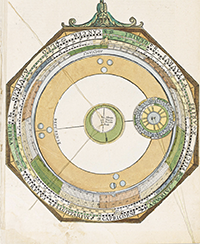

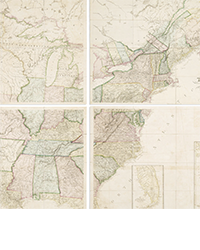


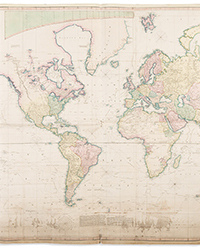
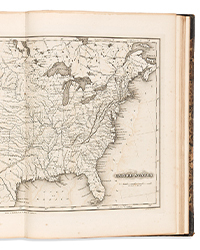
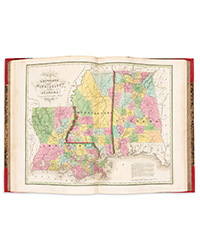
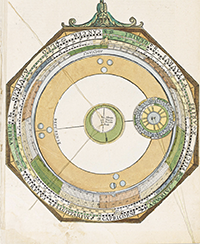
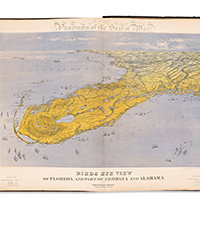
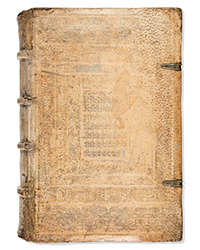
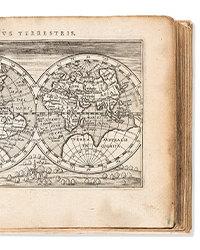
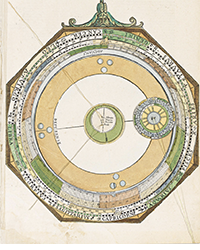
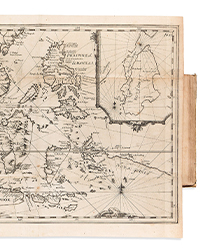
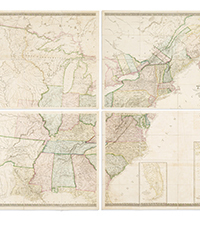

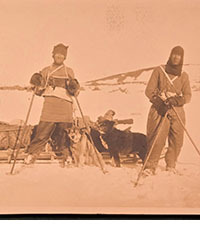
![<b>Scandinavian Art & Rare Books Auctions, Dec. 4:</b> ROALD AMUNDSEN: «Sydpolen» [ The South Pole] 1912. First edition in jackets and publisher's slip case. <b>Scandinavian Art & Rare Books Auctions, Dec. 4:</b> ROALD AMUNDSEN: «Sydpolen» [ The South Pole] 1912. First edition in jackets and publisher's slip case.](https://ae-files.s3.amazonaws.com/AdvertisementPhotos/0a99416d-9c0f-4fa3-afdd-7532ca8a2b2c.jpg)
![<b>Scandinavian Art & Rare Books Auctions, Dec. 4:</b> AMUNDSEN & NANSEN: «Fram over Polhavet» [Farthest North] 1897. AMUNDSEN's COPY! <b>Scandinavian Art & Rare Books Auctions, Dec. 4:</b> AMUNDSEN & NANSEN: «Fram over Polhavet» [Farthest North] 1897. AMUNDSEN's COPY!](https://ae-files.s3.amazonaws.com/AdvertisementPhotos/a077b4a5-0477-4c47-9847-0158cf045843.jpg)
![<b>Scandinavian Art & Rare Books Auctions, Dec. 4:</b> ERNEST SHACKLETON [ed.]: «Aurora Australis» 1908. First edition. The NORWAY COPY. <b>Scandinavian Art & Rare Books Auctions, Dec. 4:</b> ERNEST SHACKLETON [ed.]: «Aurora Australis» 1908. First edition. The NORWAY COPY.](https://ae-files.s3.amazonaws.com/AdvertisementPhotos/6363a735-e622-4d0a-852e-07cef58eccbe.jpg)
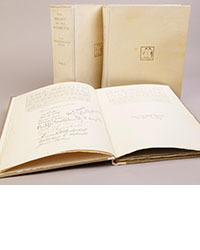
![<b>Scandinavian Art & Rare Books Auctions, Dec. 4:</b> SHACKLETON, BERNACCHI, CHERRY-GARRARD [ed.]: «The South Polar Times» I-III, 1902-1911. <b>Scandinavian Art & Rare Books Auctions, Dec. 4:</b> SHACKLETON, BERNACCHI, CHERRY-GARRARD [ed.]: «The South Polar Times» I-III, 1902-1911.](https://ae-files.s3.amazonaws.com/AdvertisementPhotos/3ee16d5b-a2ec-4c03-aeb6-aa3fcfec3a5e.jpg)
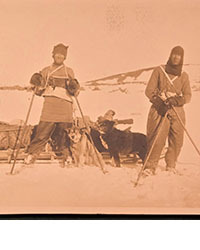
![<b>Scandinavian Art & Rare Books Auctions, Dec. 4:</b> [WILLEM BARENTSZ & HENRY HUDSON] - SAEGHMAN: «Verhael van de vier eerste schip-vaerden […]», 1663. <b>Scandinavian Art & Rare Books Auctions, Dec. 4:</b> [WILLEM BARENTSZ & HENRY HUDSON] - SAEGHMAN: «Verhael van de vier eerste schip-vaerden […]», 1663.](https://ae-files.s3.amazonaws.com/AdvertisementPhotos/d5f50485-7faa-423f-af0c-803b964dd2ba.jpg)
![<b>Scandinavian Art & Rare Books Auctions, Dec. 4:</b> TERRA NOVA EXPEDITION | LIEUTENANT HENRY ROBERTSON BOWERS: «At the South Pole.», Gelatin Silver Print. [10¾ x 15in. (27.2 x 38.1cm.) ]. <b>Scandinavian Art & Rare Books Auctions, Dec. 4:</b> TERRA NOVA EXPEDITION | LIEUTENANT HENRY ROBERTSON BOWERS: «At the South Pole.», Gelatin Silver Print. [10¾ x 15in. (27.2 x 38.1cm.) ].](https://ae-files.s3.amazonaws.com/AdvertisementPhotos/fb024365-7d7a-4510-9859-9d26b5c266cf.jpg)
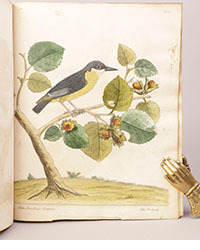
![<b>Scandinavian Art & Rare Books Auctions, Dec. 4:</b> PAUL GAIMARD: «Voyage de la Commision scientific du Nord, en Scandinavie, […]», c. 1842-46. ONLY HAND COLOURED COPY KNOWN WITH TWO ORIGINAL PAINTINGS BY BIARD. <b>Scandinavian Art & Rare Books Auctions, Dec. 4:</b> PAUL GAIMARD: «Voyage de la Commision scientific du Nord, en Scandinavie, […]», c. 1842-46. ONLY HAND COLOURED COPY KNOWN WITH TWO ORIGINAL PAINTINGS BY BIARD.](https://ae-files.s3.amazonaws.com/AdvertisementPhotos/a7c0eda0-9d8b-43ac-a504-58923308d5a4.jpg)
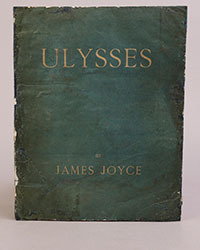
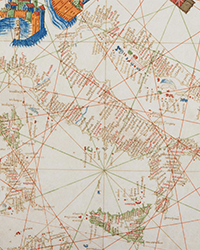
![<b>Sotheby’s, Dec. 11:</b> Darwin and Wallace. On the Tendency of Species to form Varieties..., [in:] <i>Journal of the Proceedings of the Linnean Society,</i> Vol. III, No. 9., 1858, Darwin announces the theory of natural selection. £100,000 to £150,000. <b>Sotheby’s, Dec. 11:</b> Darwin and Wallace. On the Tendency of Species to form Varieties..., [in:] <i>Journal of the Proceedings of the Linnean Society,</i> Vol. III, No. 9., 1858, Darwin announces the theory of natural selection. £100,000 to £150,000.](https://ae-files.s3.amazonaws.com/AdvertisementPhotos/00d5fd41-2542-4a80-b119-4886d4b9925f.png)

